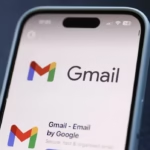Want more views, saves, and follows without making extra videos? Translate your Reels so people understand you in their language. With AI translation for Reels, you can add subtitles, dub your voice, and even match lip movement so it looks and sounds natural.
Creators who make content easy to understand see higher watch time and more shares. When viewers follow the story, they stick around and take action.
In this guide, you will pick the best path: the fastest in‑app option, a pro path for many languages, or a simple DIY workflow.
How AI Reel Translation Works, and When to Use Dubbing or Subtitles
First, a few quick terms in plain language:
- Translate: change words into a new language.
- Transcribe: turn speech into text.
- Captions and subtitles: on‑screen text viewers can read.
- Dubbing: a new voice track in a different language.
- Voice clone: your voice, recreated by AI in another language.
- Lip sync: matching mouth movement to the translated speech.
Why it matters for Reels: captions help viewers who watch on mute, dubbing helps viewers feel like you are speaking to them, and lip sync keeps the illusion real. For many creators, both work best together.
You have two paths:
- Subtitles only, which are fast and low-cost.
- Full dubbing with voice, which feels native and can lift completion rates on talk‑to‑camera clips.
Short, clear clips translate best. Avoid long rambles and heavy slang. Also, add music inside Instagram, not baked into your video file, so translation features work smoothly.
Subtitles vs Dubbing: Which One Should You Choose?
Examples make it easy:
- Use subtitles for tutorials with on‑screen steps, listicles, quick memes, product demos, and screen recordings.
- Use dubbing for direct‑to‑camera tips, storytelling, founder updates, behind‑the‑scenes, and interviews.
Mix both when it helps. Dub the main voice, then keep subtitles for names, terms, or key phrases. Many people still watch with the sound off, so subtitles help even if you dub.
What Makes AI Translation Accurate on Reels
Better inputs, better results:
- Record clean audio. Speak clearly, face the camera, and keep your mouth visible for a stronger lip sync.
- Skip loud background music in your original; add music later in Instagram.
- Keep slang and filler words low. Write a short script or bullet points.
- Say brand names and acronyms clearly. Add them to a glossary if your tool supports it.
- Use a steady pace, and avoid talking over others if multiple speakers appear.
Step-by-Step: Three Easy Ways to Translate a Reel With AI
Pick the path that fits your time, budget, and quality bar.
Fast and Free: Use Meta AI Translations Inside Instagram
This is the quickest way for many creators.
- Update Instagram to the latest version.
- Create or pick a Reel.
- Before publishing, tap More Options.
- Go to Accessibility and Translation.
- Choose Translate Voice, pick a language, preview, then post.
Commonly supported languages today include English, Spanish, Hindi, and Portuguese. Some features roll out by region, and some accounts need to be public or linked to a Facebook creator account with at least 1,000 followers. For official details and rollout notes, see Meta’s update on how to discover Reels translated with Meta AI.
Best practices:
- Face the camera, keep your mouth visible.
- Avoid loud background music in the original.
- Add music inside Instagram after dubbing for cleaner results.
Pro Quality: Use a Dubbing Platform When You Need More Languages
This is ideal for brand work, ads, and cross‑market campaigns.
- Upload your Reel to a dubbing platform.
- Choose target languages.
- Pick a voice style, enable lip sync if available, and set pronunciation rules.
- Review and edit the script if needed.
- Download the dubbed audio files, then upload or sync them to your Reel using Meta tools.
Pro platforms, like CAMB.AI, can handle more languages, stronger lip sync, multiple speakers, and better voice controls. They cost more and take longer, but the polish shows.
DIY Budget Method: Auto Captions, Translate Text, Add AI Voiceover
Use a low‑cost stack with flexible tools.
- Transcribe your audio to get a clean script.
- Translate the transcript into your target languages.
- Generate an AI voiceover for each language.
- Replace or mix your original audio in a simple editor.
- Add subtitles too, since many people watch without sound.
Tips:
- Export clean SRT files, keep lines short, and use high‑contrast caption styles.
- Check timing so text matches the voice.
- Keep file formats common for social video to avoid glitches.
Make It Easy for Viewers: How People Turn On Translations
Help viewers find and use translations.
- Viewers open a Reel, tap Translations, then choose a language.
- Say in your caption, or in the first seconds, that translations are available.
- Pin a comment listing supported languages if it helps.
For more on what the built‑in tool does and where it is rolling out, see Instagram’s note on Meta AI translations for creators.
Best AI Tools in 2025 for Translating Reels, and How to Choose
Start simple, then upgrade when you see results. Test a short clip before you buy a yearly plan.
Meta AI Translations: Built-In, Fast, and Simple
- Pros: one tap inside Instagram, quick posting, lip sync for some languages, and no extra apps.
- Cons: limited language list today, can be region locked, and some accounts will not see it yet.
- Best for: creators who want speed and only need a few popular languages.
- Quick path: More Options, Accessibility and Translation, Translate Voice.
Pro Dubbing Platforms Like CAMB.AI: When Quality Matters Most
- Pros: broader language coverage, stronger lip sync, voice styles, better multi‑speaker handling.
- Cons: higher cost, longer turnaround times.
- Best for: brands, ads, UGC deals, long‑term series, or anyone who wants studio‑level output.
- Look for: speaker detection, edit script inside the tool, pronunciation control, clear rights for cloned voices, and export formats that fit your workflow.
Budget Creator Stack: Caption Apps, AI Voices, Simple Editors
- What to use: auto caption tools, machine translation for text, AI text‑to‑speech for voiceover, and a mobile editor to sync.
- Watch for: robotic voices, bad timing on captions, and awkward phrasing. Keep takes short and clear.
How to Pick the Right Tool for You
Checklist:
- Languages you need today, and next quarter.
- Lip sync quality and the ability to clone your voice.
- Multi‑speaker support and easy script editing.
- Rights and consent for voice cloning and translations.
- Export formats, SRT support, and easy uploads to Instagram.
- Privacy controls and responsive support.
Run a 15 t330-second test in two or three tools. Compare clarity, timing, lip match, and viewer reactions before you commit.
Make It Sound Natural, Get Found in Search, and Track Results
Turn solid translations into real growth.
Quality Tips for Clean Audio and Realistic Lip Sync
- Record in a quiet room, speak clearly, and face the camera.
- Keep your mouth visible, avoid covering your lips with props or hair.
- Skip loud music in the original. Add music later in Instagram.
- Use strong contrast on subtitles, avoid tiny fonts, and keep text away from edges.
Cultural Checks: Names, Slang, and Tone
- Ask a native speaker to skim key lines when possible.
- Avoid jokes or idioms that do not translate cleanly.
- Double‑check names, brand terms, and product claims.
- If you clone your voice, make sure you have the rights and consent.
- Add a short note that a clip is AI-dubbed if your brand policy or local rules require it.
Instagram SEO for Multilingual Reels
- Put the main keyword and language in the first line of your caption when it feels natural.
- Use 3 to 8 relevant hashtags in each language.
- Add translated on‑screen text or captions so the system can read the language.
- Keep titles and hooks short and clear. Front‑load value in the first 2 seconds.
- Use a clear call to action, like Save for later or Comment your language.
Measure What Works, Then Improve
Watch what moves the needle:
- Views by region, watch time, completion rate, saves, shares, and follows.
- A/B test hooks, language choices, and subtitles versus dubbing.
- Post at local peak times for each target region.
- Do a monthly review, double down on languages with the strongest results.
Conclusion
You have three clear paths to translate your Reels with AI: use in‑app Meta AI for speed, pick a pro dubbing platform for top quality and more languages, or run a DIY stack for control on a budget. The upside is simple: more reach, higher watch time, and stronger engagement. Pick one Reel, try one method this week, and track your results. Save this post, and share it with a creator friend who wants global growth.















